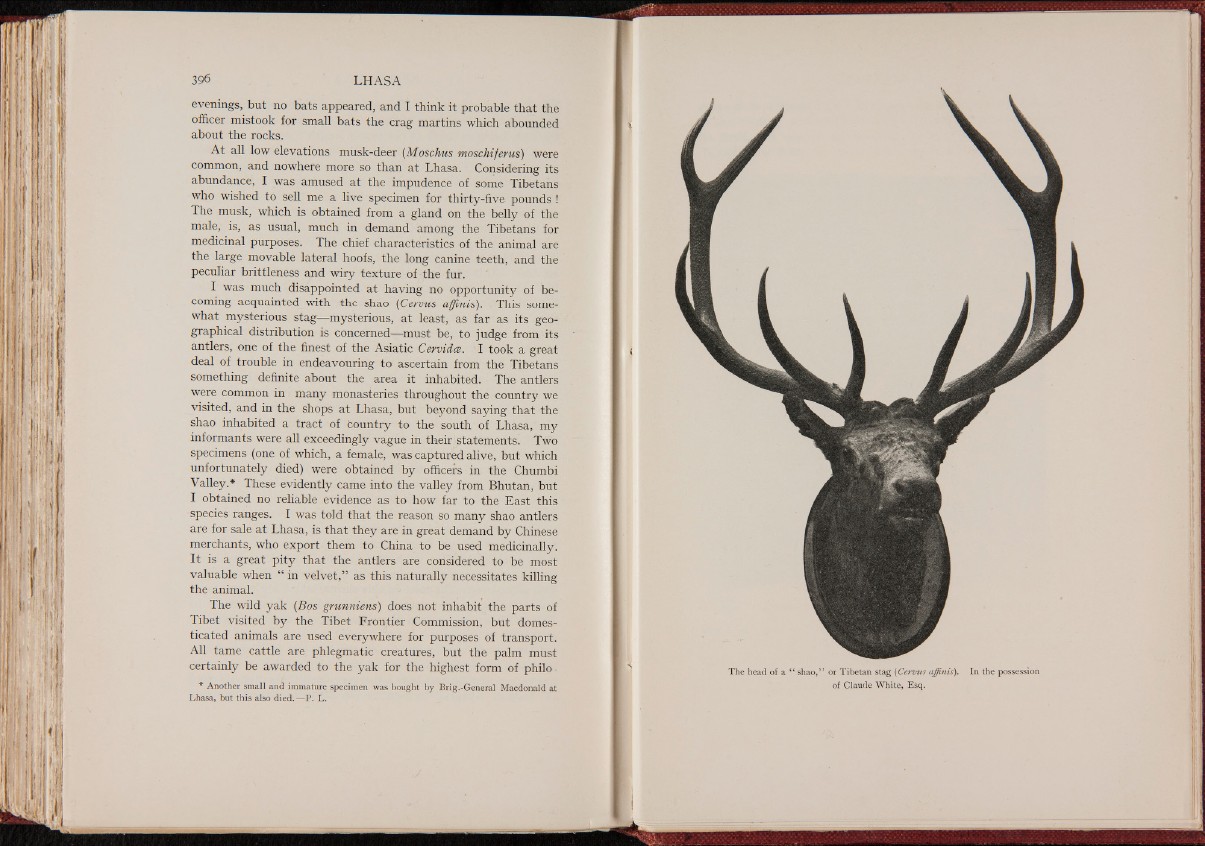
evenings, but no bats appeared, and I think it probable that the
officer mistook for small bats the crag martins which abounded
about the rocks.
At all low elevations musk-deer (Moschus moschiferus) were
common, and nowhere more so than at Lhasa. Considering its
abundance, I was amused at the impudence of some Tibetans
who wished to sell me a live specimen for thirty-five pounds !
The musk, which is obtained from a gland on the belly of the
male, is, as usual, much in demand among the Tibetans for
medicinal purposes. The chief characteristics of the animal are
the large movable lateral hoofs, the long canine teeth, and the
peculiar brittleness and wiry texture of the fur.
I was much disappointed at having no opportunity of becoming
acquainted with the shao (Cervus affinis). This somewhat
mysterious stag— mysterious, at least, as far as its geographical
distribution is concerned— must be, to judge from its
antlers, one of the finest of the Asiatic Cervidce. I took a great
deal of trouble in endeavouring to ascertain from the Tibetans
something definite about the area it inhabited. The antlers
were common in many monasteries throughout the country we
visited, and in the shops at Lhasa, but beyond saying that the
shao inhabited a tract of country to the south of Lhasa, my
informants were all exceedingly vague in their statements. Two
specimens (one of which, a female, was captured alive, but which
unfortunately died) were obtained by officers in the Chumbi
Valley.* These evidently came into the valley from Bhutan, but
I obtained no reliable evidence as to how far to the East this
species ranges. I was told that the reason so many shao antlers
are for sale at Lhasa, is that they are in great demand by Chinese
merchants, who export them to China to be used medicinally.
It is a great pity that the antlers are considered to be most
valuable when “ in velvet,” as this naturally necessitates killing
the animal.
The wild yak (Bos grunniens) does not inhabit the parts of
Tibet visited by the Tibet Frontier Commission, but domesticated
animals are used everywhere for purposes of transport.
All tame cattle are phlegmatic creatures, but the palm must
certainly be awarded to the yak for the highest form of philo
* Another small and immature specimen was bought by Brig.-General Macdonald at
Lhasa, but this also died. — P. L.
The head of a “ shao,” or Tibetan stag (Cervus affinis). In the possession
of Claude White, Esq.